Abstract
Previous measurements of the transepithelial potential difference (PD) of the proximal tubule have yielded widely conflicting values (range -20 to +3 mV). In a recent study, Kokko has demonstrated that the PD of the in vitro perfused isolated proximal tubule of the rabbit varies in a predictable way from -6 to +3 mV, depending on the concentration of chloride, bicarbonate, glucose, and amino acids in the perfusing solution. The present micropuncture study examines the effect of tubular fluid composition on the PD profile along the proximal tubule of the in vivo rat kidney. Low resistance measuring electrodes with large tips (3-5 microns OD) filled with 3 M KCl, were used to provide stable PD recordings. Experiments were performed to validate the use of these electrodes. Transepithelial PD measurements were made in immediate postglomerular segments identified by injection of dye into Bowman's space of accessible surface glomeruli and in randomly selected more distal segments of the proximal tubule. In the control state, the first loop was found to have a small but consistently negative PD which could be obliterated by an infusion of phloridzin. In contrast, the PD in later segments was consistently positive. Infusion of acetazolamide abolished the positive PD in the later segments. Acetazolamide and glucose infusion resulted in a negative PD which was abolished by the additional infusion of phloridzin. These data provide evidence that glucose reabsorption is electrogenic and can account for the small negative PD normally present in the early proximal tubule. The positive PD in later segments appears to be a passive chloride diffusion potential. This positive potential is discussed as an important electrochemical driving force for significant passive reabsorption of sodium in the proximal tubule.
Full text
PDF
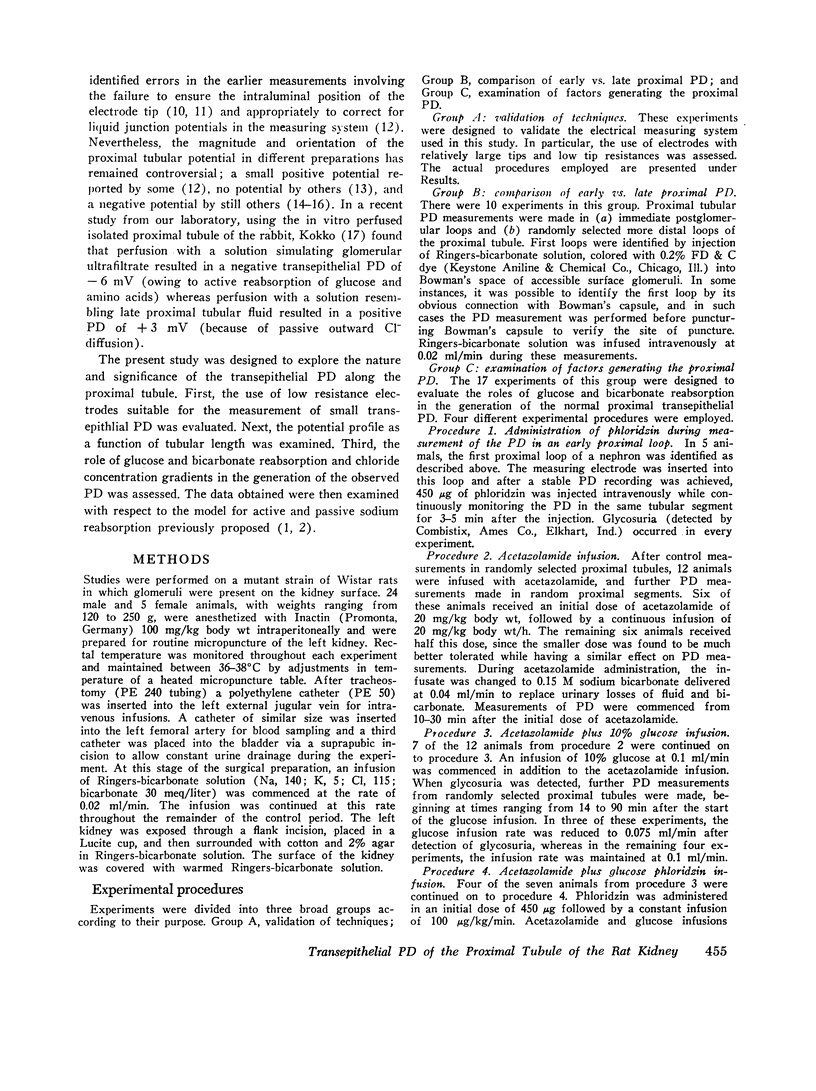

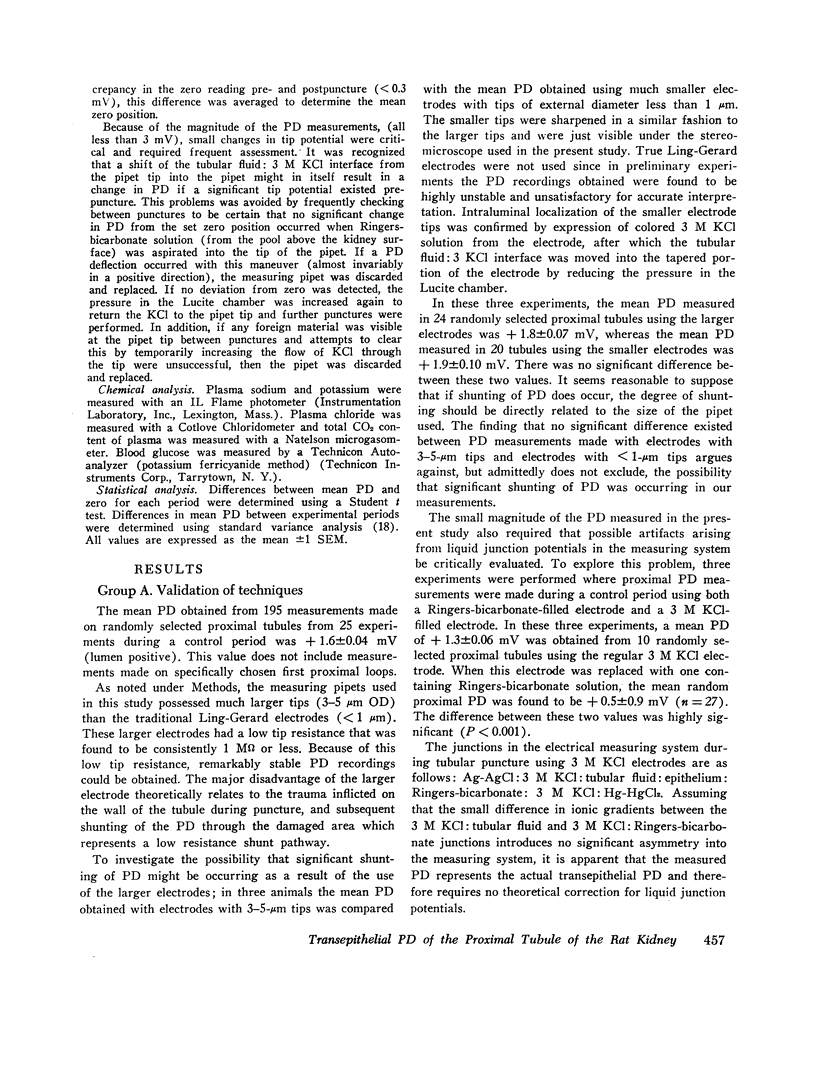


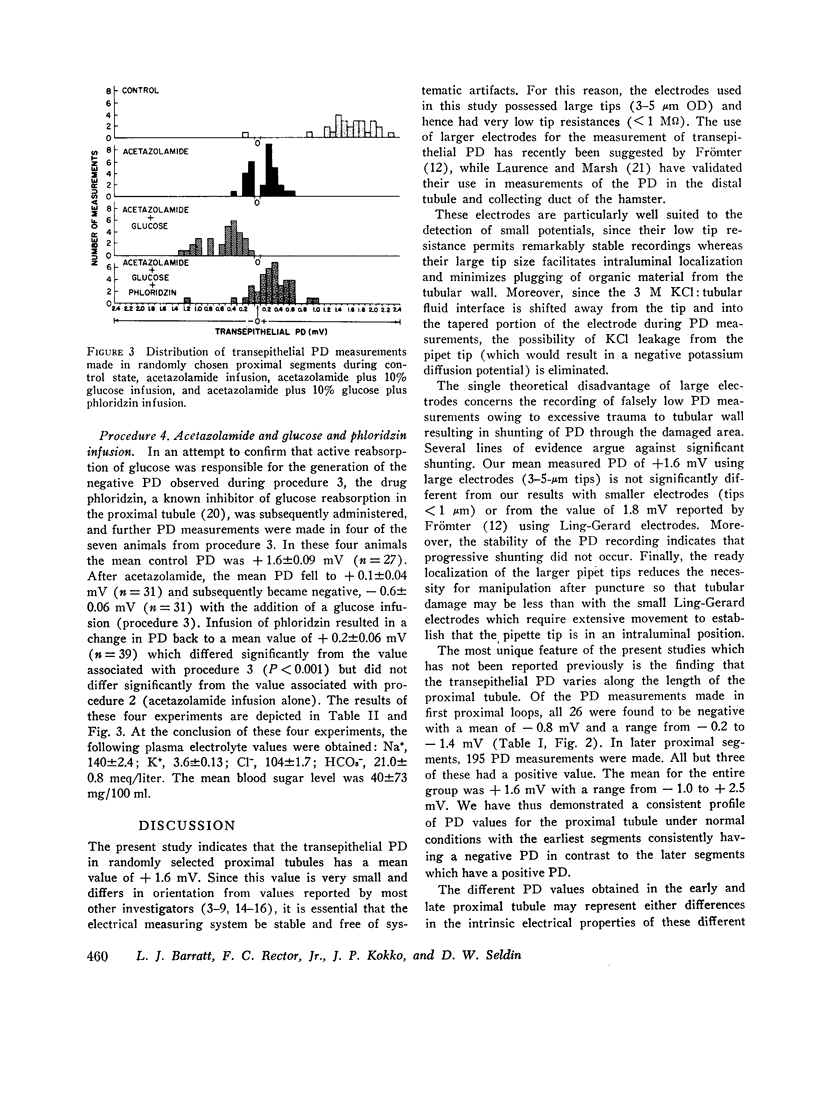

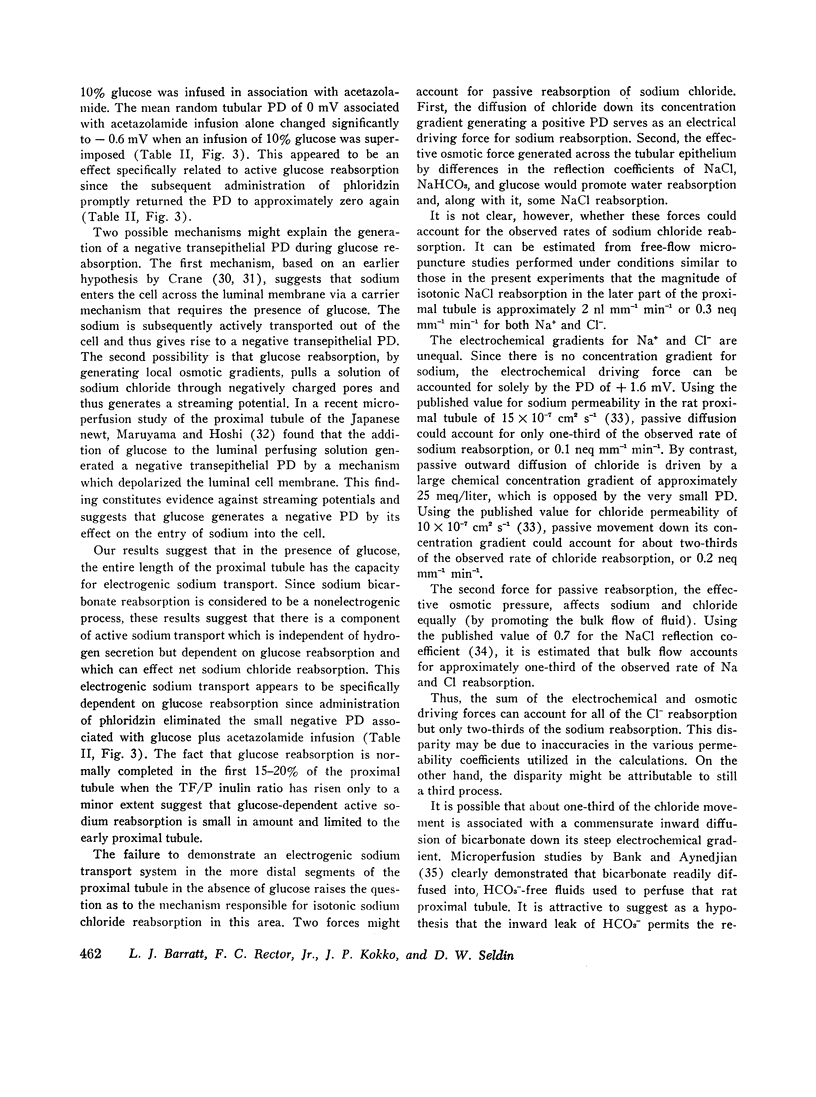
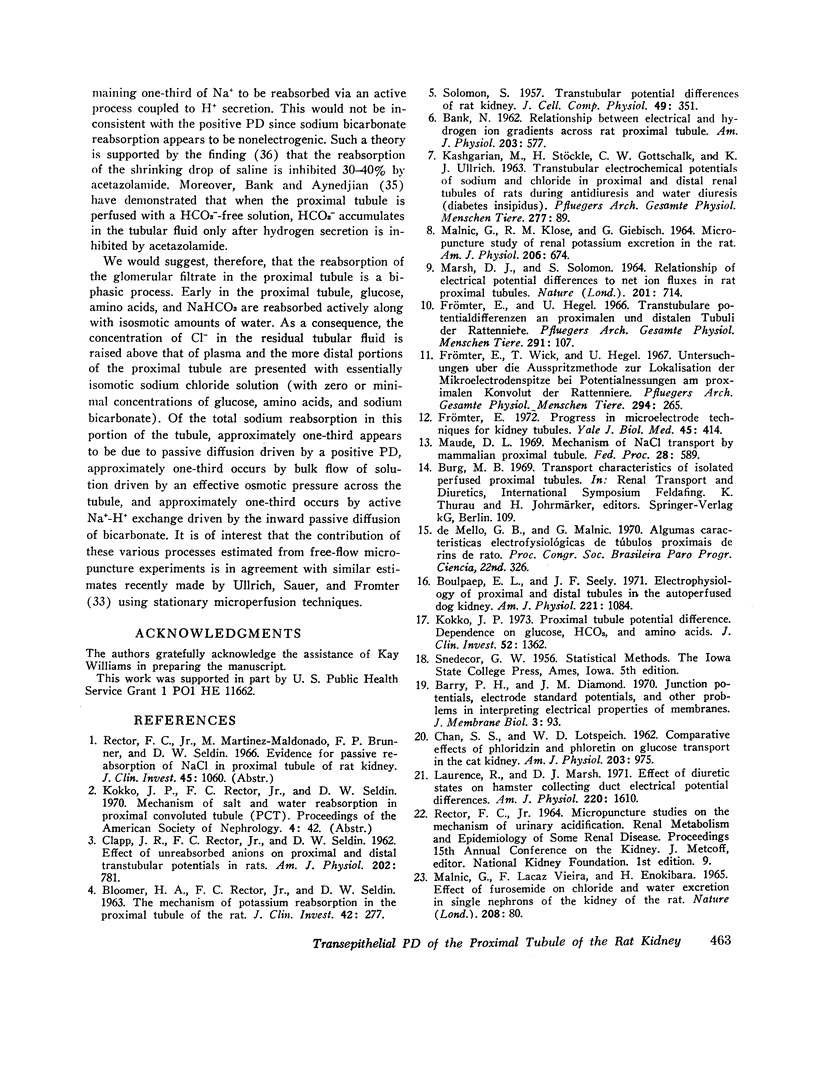
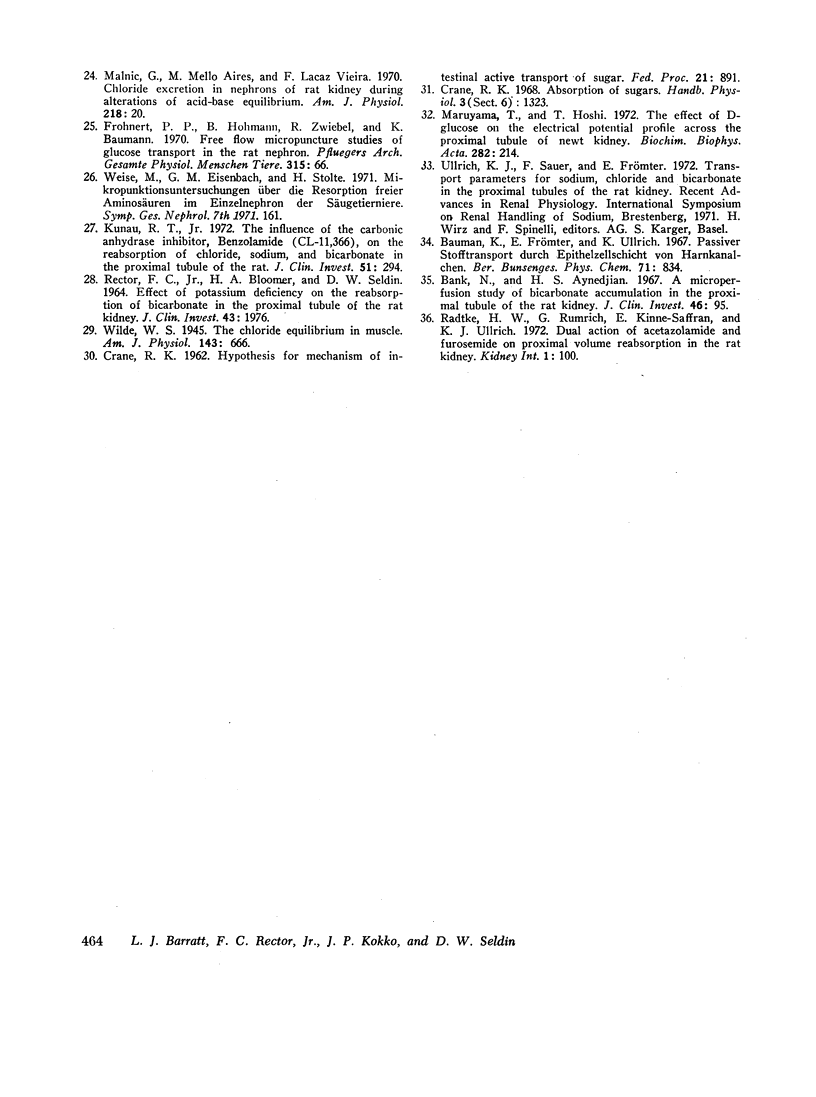
Images in this article
Selected References
These references are in PubMed. This may not be the complete list of references from this article.
- BANK N. Relationship between electrical and hydrogen ion gradients across rat proximal tubule. Am J Physiol. 1962 Sep;203:577–582. doi: 10.1152/ajplegacy.1962.203.3.577. [DOI] [PubMed] [Google Scholar]
- BLOOMER H. A., RECTOR F. C., Jr, SELDIN D. W. The mechanism of potassium reabsorption in the proximal tubule of the rat. J Clin Invest. 1963 Feb;42:277–285. doi: 10.1172/JCI104714. [DOI] [PMC free article] [PubMed] [Google Scholar]
- Bank N., Aynedjian H. S. A microperfusion study of bicarbonate accumulation in the proximal tubule of the rat kidney. J Clin Invest. 1967 Jan;46(1):95–102. doi: 10.1172/JCI105515. [DOI] [PMC free article] [PubMed] [Google Scholar]
- Boulpaep E. L., Seely J. F. Electrophysiology of proximal and distal tubules in the autoperfused dog kidney. Am J Physiol. 1971 Oct;221(4):1084–1096. doi: 10.1152/ajplegacy.1971.221.4.1084. [DOI] [PubMed] [Google Scholar]
- CHAN S. S., LOTSPEICH W. D. Comparative effects of phlorizin and phloretin on glucose transport in the cat kidney. Am J Physiol. 1962 Dec;203:975–979. doi: 10.1152/ajplegacy.1962.203.6.975. [DOI] [PubMed] [Google Scholar]
- CLAPP J. R., RECTOR F. C., Jr, SELDIN D. W. Effect of unreabsorbed anions on proximal and distal transtubular potentials in rats. Am J Physiol. 1962 Apr;202:781–786. doi: 10.1152/ajplegacy.1962.202.4.781. [DOI] [PubMed] [Google Scholar]
- CRANE R. K. Hypothesis for mechanism of intestinal active transport of sugars. Fed Proc. 1962 Nov-Dec;21:891–895. [PubMed] [Google Scholar]
- Frohnert P. P., Höhmann B., Zwiebel R., Baumann K. Free flow micropuncture studies of glucose transport in the rat nephron. Pflugers Arch. 1970;315(1):66–85. doi: 10.1007/BF00587238. [DOI] [PubMed] [Google Scholar]
- Frömter E., Hegel U. Transtubuläre Potentialdifferenzen an proximalen und distalen Tubuli der Rattenniere. Pflugers Arch Gesamte Physiol Menschen Tiere. 1966;291(1):107–120. [PubMed] [Google Scholar]
- Frömter E., Wick T., Hegel U. Untersuchungen über die Ausspritzmethode zur Lokalisation der Mikroelektrodenspitze bei Potentialmessungen am proximalen Konvolut der Rattenniere. Pflugers Arch Gesamte Physiol Menschen Tiere. 1967;294(4):265–273. [PubMed] [Google Scholar]
- Kokko J. P. Proximal tubule potential difference. Dependence on glucose on glucose, HCO 3 , and amino acids. J Clin Invest. 1973 Jun;52(6):1362–1367. doi: 10.1172/JCI107308. [DOI] [PMC free article] [PubMed] [Google Scholar]
- Kunau R. T., Jr The influence of the carbonic anhydrase inhibitor, benzolamide (CL-11,366), on the reabsorption of chloride, sodium, and bicarbonate in the proximal tubule of the rat. J Clin Invest. 1972 Feb;51(2):294–306. doi: 10.1172/JCI106814. [DOI] [PMC free article] [PubMed] [Google Scholar]
- Laurence R., Marsh D. J. Effect of diuretic states on hamster collecting duct electrical potential differences. Am J Physiol. 1971 Jun;220(6):1610–1616. doi: 10.1152/ajplegacy.1971.220.6.1610. [DOI] [PubMed] [Google Scholar]
- MALNIC G., KLOSE R. M., GIEBISCH G. MICROPUNCTURE STUDY OF RENAL POTASSIUM EXCRETION IN THE RAT. Am J Physiol. 1964 Apr;206:674–686. doi: 10.1152/ajplegacy.1964.206.4.674. [DOI] [PubMed] [Google Scholar]
- MARSH D., SOLOMON S. RELATIONSHIP OF ELECTRICAL POTENTIAL DIFFERENCES TO NET ION FLUXES IN RAT PROXIMAL TUBULES. Nature. 1964 Feb 15;201:714–715. doi: 10.1038/201714a0. [DOI] [PubMed] [Google Scholar]
- Maruyama T., Hoshi T. The effect of D-glucose on the electrical potential profile across the proximal tubule of newt kidney. Biochim Biophys Acta. 1972 Sep 1;282(1):214–225. doi: 10.1016/0005-2736(72)90327-6. [DOI] [PubMed] [Google Scholar]
- RADTKE H. W., Rumrich G., Kinne-saffran E., Ulrich K. J. Dual action of acetazolamide and furosemide on proximal volume absorption in the rat kidney. Kidney Int. 1972 Feb;1(2):100–105. doi: 10.1038/ki.1972.13. [DOI] [PubMed] [Google Scholar]
- RECTOR F. C., Jr, BLOOMER H. A., SELDIN D. W. EFFECT OF POTASSIUM DEFICIENCY ON THE REABSORPTION OF BICARBONATE IN THE PROXIMAL TUBULE OF THE RAT KIDNEY. J Clin Invest. 1964 Oct;43:1976–1982. doi: 10.1172/JCI105071. [DOI] [PMC free article] [PubMed] [Google Scholar]
- SOLOMON S. Transtubular potential differences of rat kidney. J Cell Physiol. 1957 Apr;49(2):351–365. doi: 10.1002/jcp.1030490215. [DOI] [PubMed] [Google Scholar]




